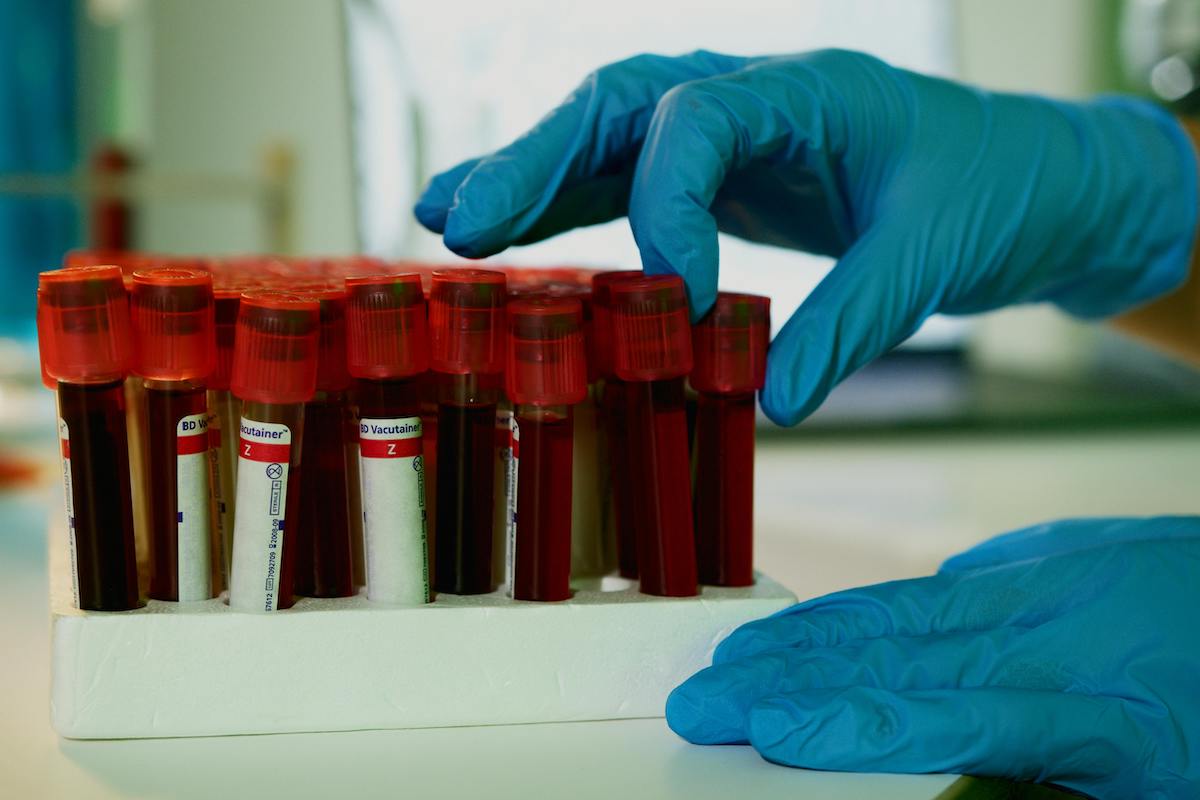Recent research revealed that blood biomarker tests for Alzheimer’s disease are less reliable for Black patients than for other ethnic and racial groups. Experts advise patients and physicians to proceed with caution when looking at results.
A study by researchers at Rutgers University in New Jersey found that these tests were less accurate and had lower specificity among Black participants than among white, non-Hispanic or Chinese participants. While testing has come a long way since the early 2000s, when the only definitive way to check for plaque was post-mortem, these study results reinforce that no one single test alone can diagnose Alzheimer’s or related dementias and that biomarkers are only part of a complete assessment, according to the National Institute on Aging.
“These tests are currently geared towards primary care physicians and directly to older adults concerned about cognitive performance,” said senior author William Hu, M.D., Ph.D., director of the Rutgers Center for Healthy Aging Research and chief of the Rutgers Cognitive Neurology & Alzheimer’s Disease Clinic. “They may provide some value to primary care doctors who understand their limitations, but there is no reason for patients who have concerns about their memory to buy these tests.” Hu said tests often cost $1,200 to $2,000 and are rarely covered by insurance.
Why this matters
Other research has shown that blood biomarker tests can be an accurate and reliable means to test for proteins associated with Alzheimer’s disease, but few studies have compared results specifically among diverse populations. Journalists should use caution when reporting on study results that do not separate out the ethnic and racial makeup of participants. It can lead to misinterpreting results, spreading inaccurate misinformation about these tests and offering false hope to patients and families.
The testing problem
Before the development of blood biomarker tests, scientists generally relied on either expensive brain scans to check for plaque buildup in the brain that might indicate dementia, or they would take samples of cerebral spinal fluid. This is an often painful and costly procedure involving a lumbar puncture, also called a spinal tap, to check for the most commonly associated Alzheimer’s proteins — amyloid 42, tau and phospho-tau. Measuring changes in the levels of these substances can help diagnose neurological problems.
Blood biomarker tests are an easier, less invasive means of measuring these proteins. When combined with other tests, they can help determine whether a person might have or be at risk of developing the disease. However, no single test can definitively diagnose these conditions.
Concentrations of these biomarkers are lower in blood than in spinal fluid. This difference is particularly large for Black patients, who genetically have lower levels of the biomarker in their spinal fluid, as well as in their blood. Additionally, having just worse memory function itself also raises blood biomarker levels, according to Hu.
“The blood tests have many caveats,” Hu said. “Poor transfer of these proteins from spinal fluid to blood means many patients will go undiagnosed, especially if their disease is mild, while the ability of other ailments to increase these proteins in the blood mean tests produce false positives.”
How the study was conducted
The researchers examined test results from 217 patients at Rutgers and Emory University in Atlanta. Both cohorts included Black and non-Hispanic white participants. The Rutgers cohort also included ethnic Chinese participants. Participants underwent detailed clinical evaluations and brain imaging. Most had both blood and spinal fluid samples collected on the same day. The research team used automated testing systems to measure levels of specific proteins — particularly p-Tau217 — in both blood and spinal fluid samples.
“For Black patients, it’s a double whammy,” Hu said. “Not only will you have a harder time using these proteins in the spinal fluid to diagnose Alzheimer’s disease in Black patients, you will further reduce the detection rate by relying on the blood tests.”
The researchers found a 70% correlation between protein levels in spinal fluid and blood. However, racial disparities in these results were “significant” according to the study. When using a threshold optimized for detecting Alzheimer’s, the test showed 90.3% sensitivity (chance of diagnosing patients with disease) and 81.1% specificity (chance of correctly identifying someone as not having the disease) in white participants but 73.7% sensitivity and 72.5% specificity in Black participants.
The positive predictive value — the chance of actually having the disease when the test is positive — was much higher in white participants (87%) than Black participants (58%). These differences persisted even after accounting for known racial differences in spinal fluid protein levels, suggesting the blood test introduced additional disparities beyond what was already known.
Among patients of Chinese ancestry, test performance roughly matched its performance in white patients.
Hu said the tests may eventually prove useful but need significant refinement. “In another five to 10 years, these tests may get to the point where we can reliably use them, but right now, they are similar to some of the home COVID tests that had accuracy issues.”
The researchers emphasized that anyone with memory concerns should see a neurologist for a comprehensive evaluation rather than relying on blood test results alone. They said roughly half of all Americans with Alzheimer’s are thought to be undiagnosed, particularly those with early-stage cases that can benefit most from treatment.
The study was published on Feb. 23 in Alzheimer’s and Dementia, The Journal of the Alzheimer’s Association.
Resources
- Alzheimer’s disease facts and figures 2024, Alzheimer’s Association of America
- Risk and future burden of dementia in the United States, National Institutes of Health
- Beyond Amyloid: targeting a broader range of Alzheimer’s Risk Factors, National Instate on Aging webinar (Feb 26, 2025).
- Groundbreaking findings revolutionizing traditional perspectives on Alzheimer’s Disease, National Institutes of Health.
- Alzheimer’s Disease Research Centers (list and map).
- Trump administration fires workers at NIH’s Alzheimer’s research center, including incoming director, ABC News February 22, 2025.
- How research misconduct harms patients and science, AHCJ webinar, February 26, 2025.
